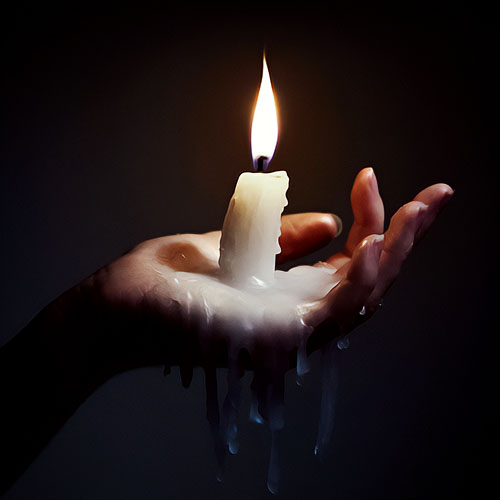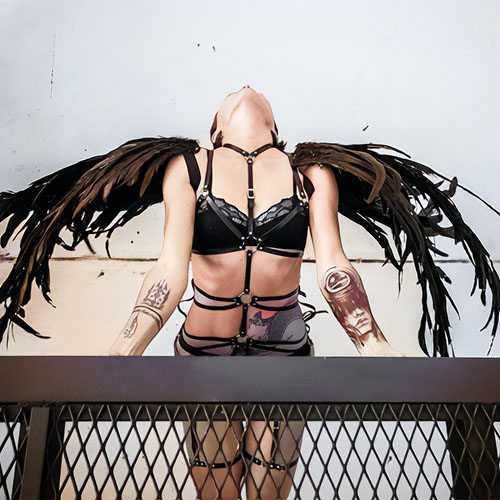The Japanese art of Shibari is often known as bondage. But not all bondage is sexual in nature, and there’s more to Shibari than kink.
Erotic Rope Bondage
We’re not saying that you will instantly convince your partner to submit to being tied up if you simply claim you want to do so because of the beauty you will create together, but calling it “Shibari” can’t hurt as a way to broach the topic.
The word itself is specific to tying or binding, but the practice is actually an art form that includes the wrist-knot chain, knot-tying of hands and chest bind — which is a figure-eight knot — as well as more advanced techniques, as you progress.
Shibari — a building of trust
Originating in 13th century Japan, the artistic form of Japanese rope bondage has had many different interpretations throughout its history. Most of the art form comes from the modification of judicial hojojutsu — the ancient Japanese martial art of restraint using cordage — and ukiyo-e woodblock prints of various torture techniques and methods for restraining and punishing prisoners.
The word for the Japanese practice of Shibari literally means “to tie,” and today it is treated as a consensual experience for the purposes of art or arousal with a rigger — “top” or “dom” — tying up another person, a “bottom,” “sub” or “bunny.” The Japanese art of kinbaku, or tight binding, is primarily aesthetic, as opposed to the more provocative art Shibari aims to express.
“The intricate practice delves into intimacy, trust, and bliss.”
Beauty in Suffering
The intricate practice delves into intimacy, trust and bliss via a ceremonial and delicate process.
The practitioner is binding their partner with a specially treated jute rope, and depending on the top, they may use diverse forms and styles of binding.
Connective Rope is a practice that focuses on touch, feel and arousal and builds connections with the submissive through intimate rope play, closeness, touch, pace and rope placement.
Alternatively, Artistic Rope concerns itself with aesthetics, including contorting the body, morphing limbs and body parts through binding or suspension, and highlighting and pulling parts inward or outward to define and enhance form and shape.
One reaches Beauty in Suffering when the subject is positioned in contortions designed to create controlled reactions toward a certain experience. These stress positions are enhanced by the pacing and timing of the session.
As an art, Shibari can be as delicate, soft and beautiful — or as harsh — as the practitioner desires. A common attribute observed about Shibari is the building of trust among participants.
Ultimately Trust resides as the key ingredient in all Shibari pursuits. The artist must develop on the sub’s journey to rope space, where the bound partner will go through a series of consensual gates and will no longer try to control their environment, becoming relaxed and entering a state of bliss. The rope adopts the role as the messenger in this journey, aiding in the transition from one mindset to another. Some say Shibari can reduce anxiety and depression while promoting an improved mental well-being for up to a week after a session.
Intimacy and devotion
Shibari requires years of dedication and practice, and a true practitioner treats the rope itself with great respect.
Jute is the cord of choice, burnished and bathed in beeswax and camellia oil, and slowly baked. This process gets repeated to create a soft yet strong binding rope. The artist matches concern for the subject being tied by the ceremonial care of the rope. A unique trust, respect and detailed understanding of one another results from Shibari performed expertly.
The art form requires a mastery of intricacy, a balance of the body and mind. On a primary level, the rope requires careful placement and an understanding of the subject’s sensitive areas. The rigger must be careful not to pinch vulnerable nerves, to keep blood flowing to the fingertips and toes and watch for any discoloration.
The dangers of a suspension without proper considerations can be permanent muscle and nerve damage, extreme exhaustion, collapse, fainting and intense muscle cramps. So one must always pay close attention to the process and the partner, Let your passion and an appreciation of elegance be your guides. Just take it easy and enjoy the learning process!
Aaron McPolin is an artist, photographer and videographer. His work delves into areas of subculture, shining a light on taboo realms, and is inspired by psychology, history and the challenging of social norms. Read more and shop on his website:
Shibari artist: Paul Kabzinski … As with most educational aspirations, while you can learn a great deal for free, for true excellence you likely need to learn from someone who makes a living in the art. In that vein (so to speak), we offer Shibari Study. If you’re just not up for twenty-five bucks a month, though, looking for videos on sites trying to sell you “gear” can be illuminating as well. As one might imagine, the rope used in this art tends to be of critical importance, so we can suggest deGiotto Rope as a place to peruse those ties that bind. … Yeah, sorry again. You should hear all the horrible puns the boss lady nixed. This one had us tied up in knots.





















